By Danny Constantinis, (Executive Chairman & CEO) of the EM&I Group, Malta.
LNG will be critical during the transition to renewables and to ensure supplies to Europe, so adequate and efficient strategic storage facilities to cope with disruptions will be required.
Over the past few years, the LNG market has changed significantly from its traditional model of long term, fully integrated supply contracts, whereby the field developer would produce and liquify the LNG ashore, transport it using the specialised LNG carriers and supply a fixed volume of LNG to a single entity such as an energy provider, to more versatile models which include spot trading, development of independently owned and operated Floating Liquefied Natural Gas (FLNG) production facilities and Floating Regasification and Storage Units (FSRUs). In the original model, the raw gas was piped to a land-based reliquefication plant where it was converted to LNG. An LNG carrier, with insulated tanks to maintain a temperature of around -163°C, transported the LNG to a shore-based storage facility where it was delivered to a land-based regasification facility and delivered to a pipeline for domestic consumption or directly to a power station for conversion to electricity for domestic supply. This model worked well especially for hydrocarbon starved nations who preferred gas as their main source of energy.
Next came the large near shore or land-based gas fields where new infrastructure transported the gas produced across national boundaries, over long distances, generally by pipeline, to feed power stations in places like Europe, USA etc.
However, as we have seen with recent events, overreliance on pipeline gas supplies can create problems when a political situation threatens to interrupt the security of supply. Considering the current situation in Ukraine, trading patterns have been redrawn to make up for any interrupted supply in the future. Countries who relied upon pipeline gas as their primary source of gas supply are now rethinking those strategies. For instance, more LNG is being shipped from the USA to Europe. Countries with available coastline are now looking at the provision of independent floating storage and regasification facilities to be the main source of supply for domestic consumption.
Coupled with this security of supply issue, the original model also changed when local regulations made it more difficult for new facilities to obtain permits to build LNG storage tanks ashore, especially near built-up areas. Lack of LNG storage ashore meant that gas cavern storage acted as an acceptable method of storing gas (as opposed to LNG). Gas storage under pressure has been used since 1917 so it has a long track record and there are currently several such storage areas in Europe and the USA, where gas is stored in salt caverns, salt domes or aquifers. Even this method of storage comes with strict regulations, especially if the cavern is located near an urban area.
In order to resolve, not only the regulatory issues but also some potential credit issues for countries who have a sub-optimum credit rating, the regasification plant was integrated with the LNG carrier and the FSRU was born. These connected a floating gas storage / regassification unit to a jetty or buoy for significantly longer periods than traditional gas carriers, while either all or part of their cargoes were discharged ashore. The need for continuous send out depended on whether they were base load (providing the main supply) or peak shaving facilities, (when they supplemented the existing energy provision during high demand periods). More and more of the world’s FSRUs are becoming a primary source of energy for the power plants. This model is likely to continue as the world transitions to greener energy.
On the production side, stranded gas fields were being developed using independent floating production facilities, much like in the past when remote oil fields were monetised, where no pipeline infrastructure existed before. Production and supply became a possibility once the offshore conditions could be managed to permit safe transfer of oil offshore to visiting offtake tankers.
New technology came along which enabled discharge of the oil, via floating or aerial hoses, either in a tandem configuration (where the visiting tanker was either tethered to the after end of the floating facility using a station keeping tug), or when the visiting tanker kept station a fixed distance off the floating production facility using dynamic positioning (DP) technology (where use is made of the offtake tankers engines, power plant and GPS or transponder enabled positioning systems).
Once the technology transitioned to the LNG world, it wasn’t long before the floating LNG regasification and production facilities became a reality. Floating LNG comes in many forms, e.g. non-land-based facilities, which could be either a) at shore (e.g. alongside a land-based jetty in an enclosed harbour) b) near shore (where the facility is connected to a semi-exposed jetty or moored by using an integrated turret/buoy) or c) offshore (where the facility is exposed to more open water weather conditions). All three varieties are relevant to both FLNG production facilities and FSRUs and there are many examples of these in the world today. Newer variations are coming to the market every day with the LNG power barge the latest arrival, which stores LNG and generates power directly on the floater, to connect directly into the local electricity grid.
One thing all these LNG facilities have in common is that they float. But once on location, and depending on the type of contract in place, there is a possibility that these floating facilities will never see a drydock for the entire duration of their contracted lives. So, much like their oil producing FP(S)O cousins, these facilities must adopt a different type of inspection and maintenance regime to continue operating in a safe and efficient manner. Conventional trading LNG carriers are subject to regular inspection regimes by recognised Classification Societies, usually involving spending periods at wet berths or dry docks. These involve detailed internal and external inspections of the hull (including tanks) and machinery, tail shaft etc. and includes activities such as hull painting, when necessary.
So, what happens when this option is no longer available? Classification societies have already adapted their rules for the construction and inspection of FSRUs and core elements of the offshore rules already provide a strong foundation to be applied to these and the LNG production facilities. This can then be supported by Class with specific guidance for the unique project type.
Safety has always been paramount in the LNG industry, and it is founded on an excellent historical track record. Every LNG operator is keen to maintain this record. Ways are constantly being looked at to maintain or improve current safety performance levels. Enclosed space entry and underwater activities are probably the two highest risk areas and biggest causes of fatalities or serious injury in the offshore industry. Safety protocols can be put in place to mitigate or manage the risk but the easiest way to remove this risk is to remove humans altogether from these tasks and to replace them with more modern technology. For instance, instead of rope access personnel hanging from heights, carrying out inspections in tanks, or divers used to carry out underwater inspections in marginal conditions, new technologies can be used as a safer, more efficient and, more importantly, approved alternative.
Operators in the offshore oil and gas sector are already making this technological transition and are adopting their inspection and maintenance regimes to lower the risks to humans, while at the same time embracing new technologies to develop more remote methods of inspection such as laser scanning, x-ray inspections, use of drones, use of ROVs and the use of cloud-based systems to store and access this digitised information. In fact, the whole digitisation piece is gathering momentum across the board. IOT (Internet of things) and OT (offshore technologies) are improving the way we monitor and learn how systems are operating and allows us to manage and interpret information in a more efficient way. The opportunities are endless as we continue to develop more innovative methods of maintenance and inspection.
LNG storage tanks come in 3 main types: Spherical, Membrane and self-supporting Prismatic shape IMO type B (SPB). For the FLNG industry, SPB technology is still some way off, so it is important to focus on the two most popular storage methods, currently in use. Spherical tanks (Moss) tanks and Membrane tanks are the two most common containment systems. Moss tanks are robust and are perfectly suited for all environments, i.e. at shore, near shore and offshore. They are more resistant to sloshing risk (due to their shape) and can store the LNG at a slightly higher pressure (around 3.2 psi). Membrane tanks have come a long way since the original designs. Reinforced membrane tanks are now more resilient and can also be used in all three environments.
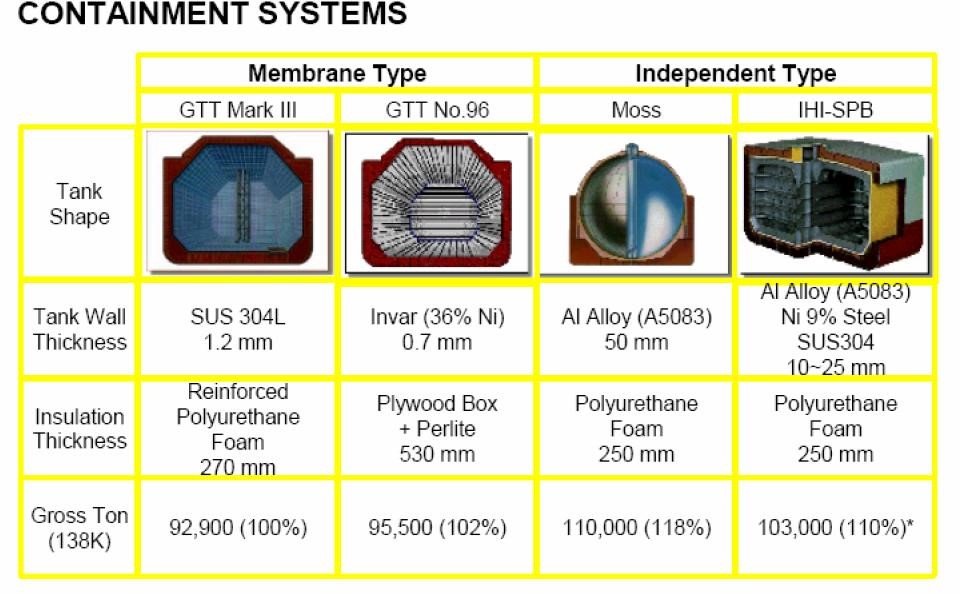
LNG tanks do require regular inspection (as per Classification Society rules) to ensure the integrity is being maintained and everything is as it should be. Early warning of a problem developing is always the best way to manage and data driven inspection and survey is perhaps the next evolution which supports both prescriptive regimes and Risk Based Inspection (RBI) philosophies.
But how can this be achieved without tank entry? A recent FloGas JIP workshop reviewed all the Classification Societies inspection requirements. It was recognised if the tanks were warmed to around 10C or above, purged and gas freed, the risk levels of dangerous fluids being present is so low that by adopting an ALARP approach, it would still be safe enough to enter the tank to carry out inspections, provided that working from heights could be avoided.
Trying to carry out inspections without any man-entry is possible but the benefits of so doing may be marginal especially considering the challenges of getting robots into the tank via the gas cap or pump tower.

To explain further…..The biggest difference between a standard tanker’s oil tank and an LNG tank is that there are little or no residues in LNG tanks, i.e. no requirement to tank clean, no sludge or scale build-up which could trap hydrocarbons and no complex internal structures which could prevent optimum drainage. LNG tanks are big open ‘cathedral-like’ structures and the only residues tend to be a slight dust. So, the risk in LNG tanks is likely to be significantly lower. Nevertheless, it is still an enclosed space entry so great care must be taken when putting personnel inside.
Even when you get inside the tanks, because of the way they are built, the areas of physical inspection are limited to the bottom (C wall), lower sloping walls at the sides (G&K walls) and the lower section of the end walls, (B&D walls), so it is incredibly difficult to truly measure any anomalies, especially higher up on the vertical side walls, where sloshing damage is most likely to occur.

One possible way to carry out a thorough tank inspection would be to use optical and/or laser scanning. This would entail setting up a camera on an extendable tripod and to carry out a 360° scan of the tank. The optical inspection (GVI and CVI) is fully accepted by Class and a recent piece of work carried out by EM&I on a membrane test piece, using laser scanning systems, proved to be very effective at identifying anomalies of various sizes on the membranes at distances of 10 metres. As a matter of fact the camera used in the test still had optical and digital zoom capability, so the tested 10 metres will be extended significantly to enable the tank to be inspected from one, maximum two locations. This would allow even the inaccessible parts of a tank to be scanned in a few hours and the results digitally processed to provide an accurate status of the membrane and to set a datum for future trending.
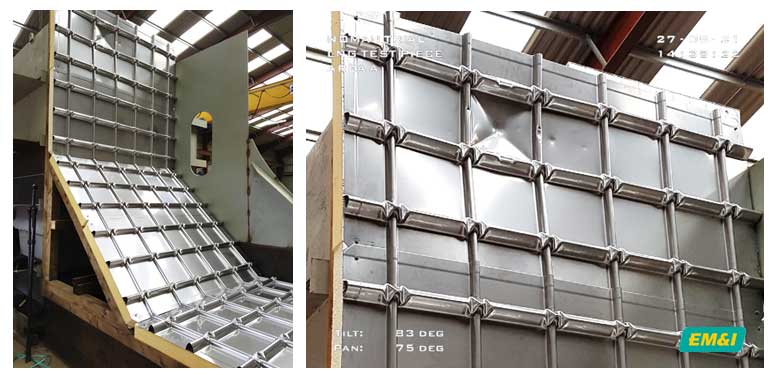
With methods like optical or laser scans, a comparison model can be developed from a baseline scan taken at the construction yard. This way any changes in the tank surface can be quantified from construction and early action taken, such as altering the loading and discharge strategies, in order to mitigate the risk of more serious damage and to avoid having to remove one these valuable assets for lengthy periods from their terminals to be repaired at a shipyard.
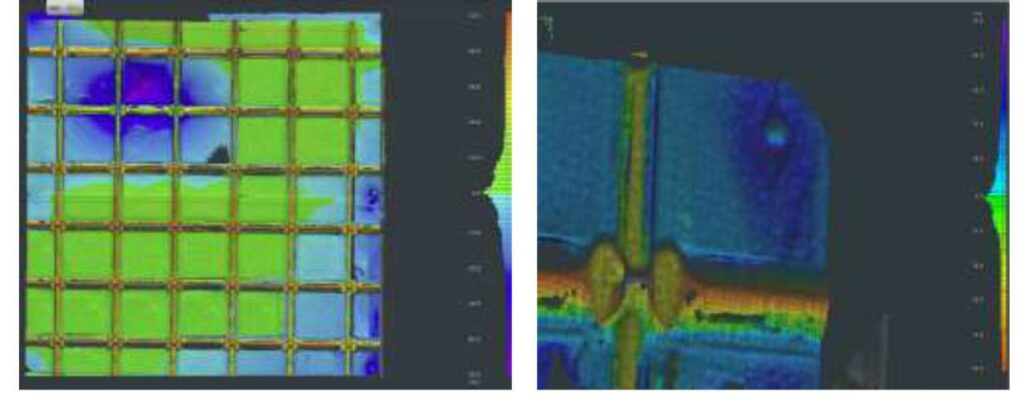
UAV technology can also be used to provide an additional tool for surveys and inspections, noting that they have somewhat limited duration and the potential to act as a ‘dropped object’
Other advanced technologies will also benefit floating gas operators when inspections and maintenance of valves or hulls are needed subsea as shown in the images below.
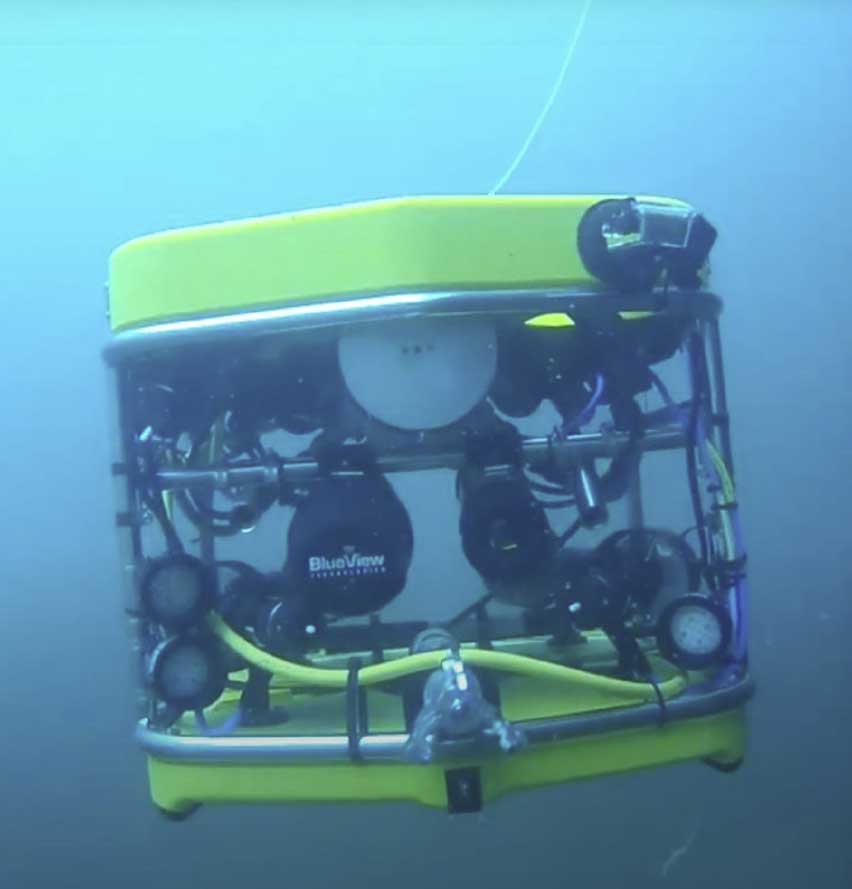
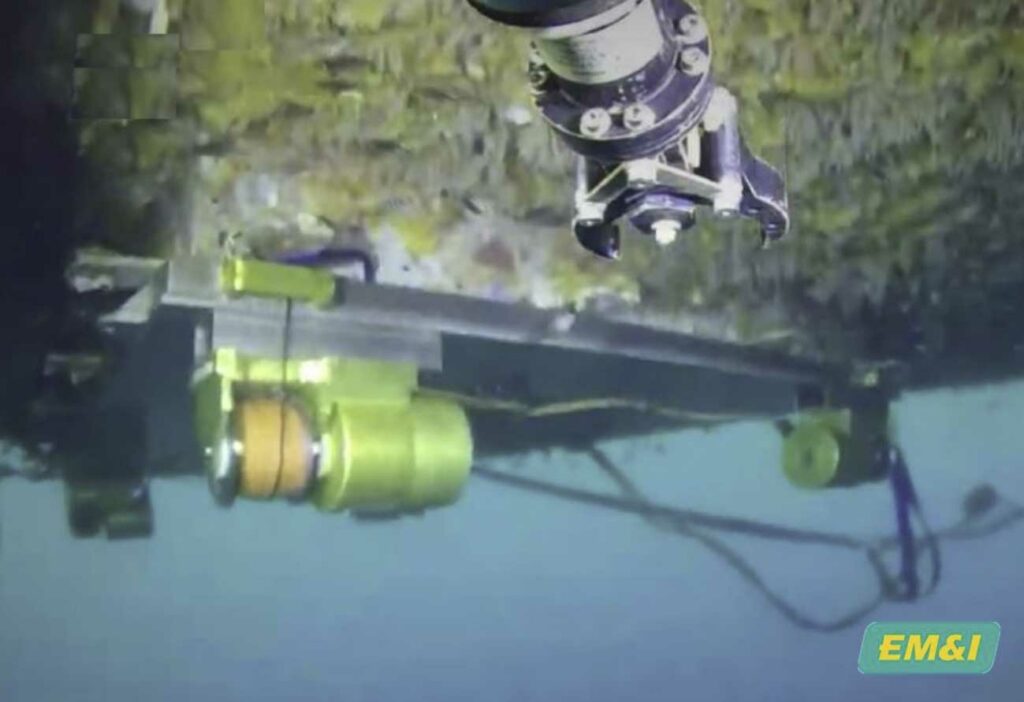
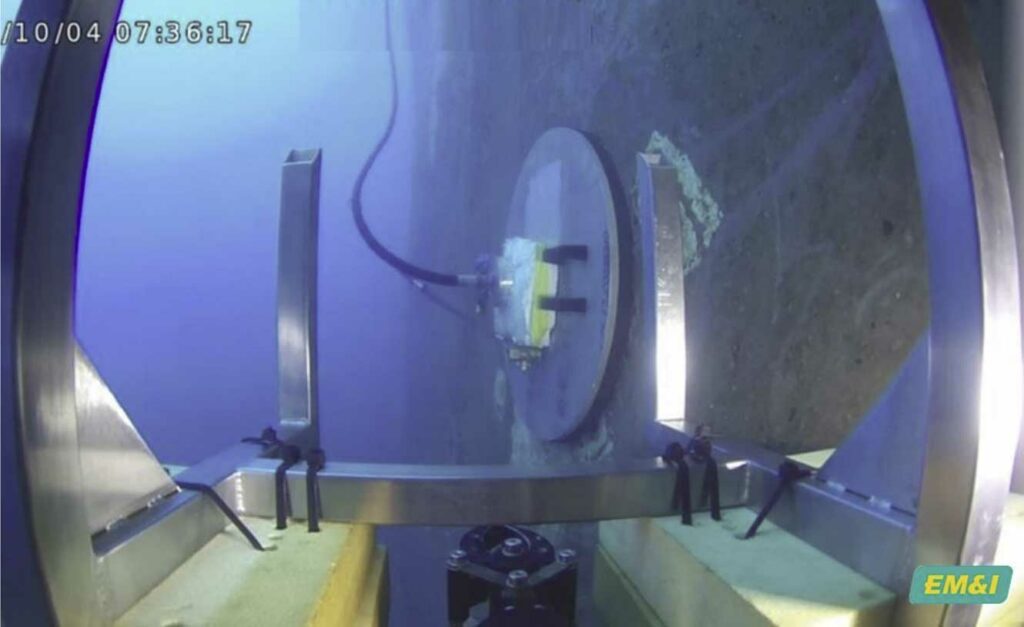
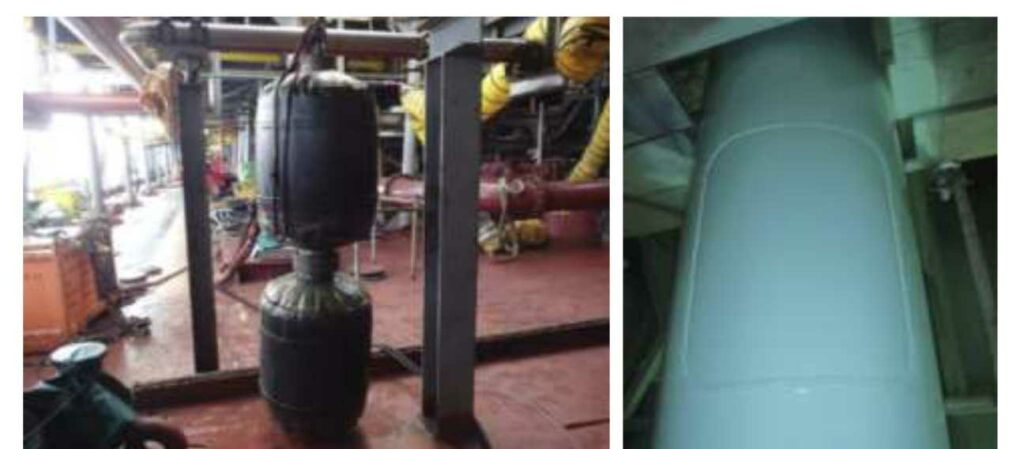
Advanced methods do not only apply to pressure systems and structures…Ex equipment integrity assurance is every bit as vital a barrier to catastrophic incidents.
The ExPert technology, comprising advanced NDT and intelligent Risk Based software, has been developed by world leading organisations and is now being applied across many assets to provide additional safety protection with lower human risk and costs, as illustrated below.
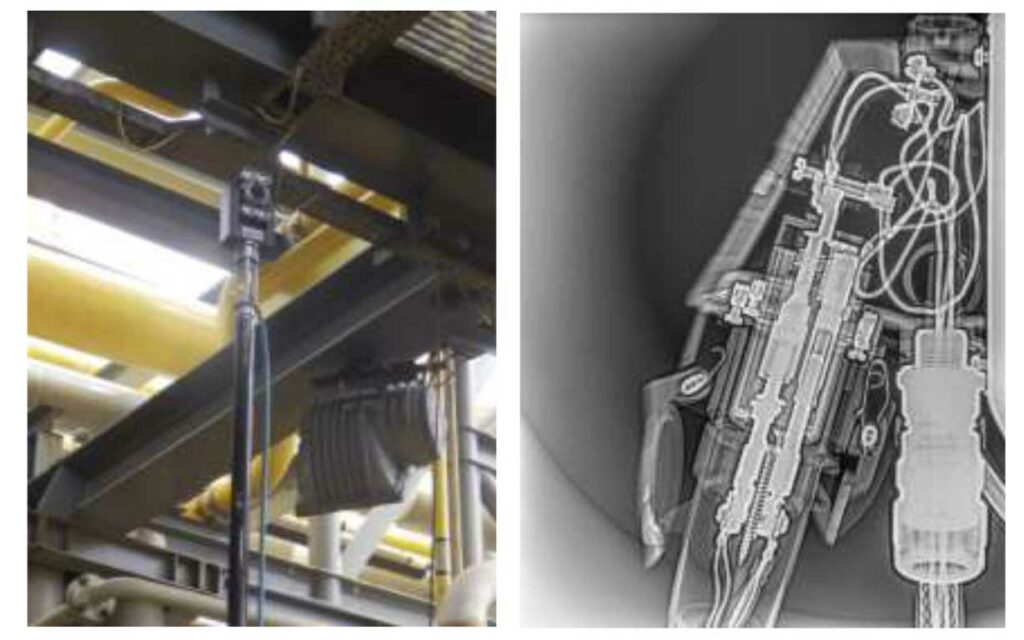
Advanced methods of inspecting for CUI without stripping insulation off, are also available as shown in the images below.
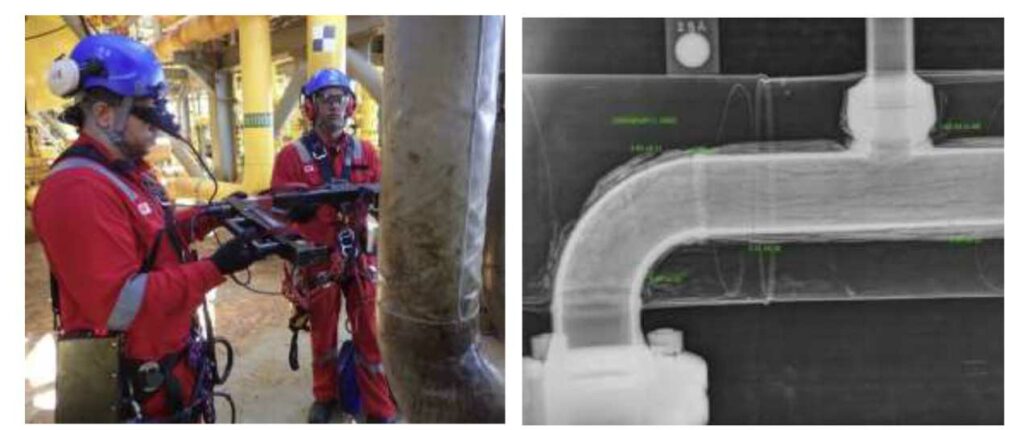
The need to put people inside pressure vessels is also rapidly diminishing with the introduction of remote but high performance cameras whos ability to detect even minor anomalies has been validated independently (Refer images below).
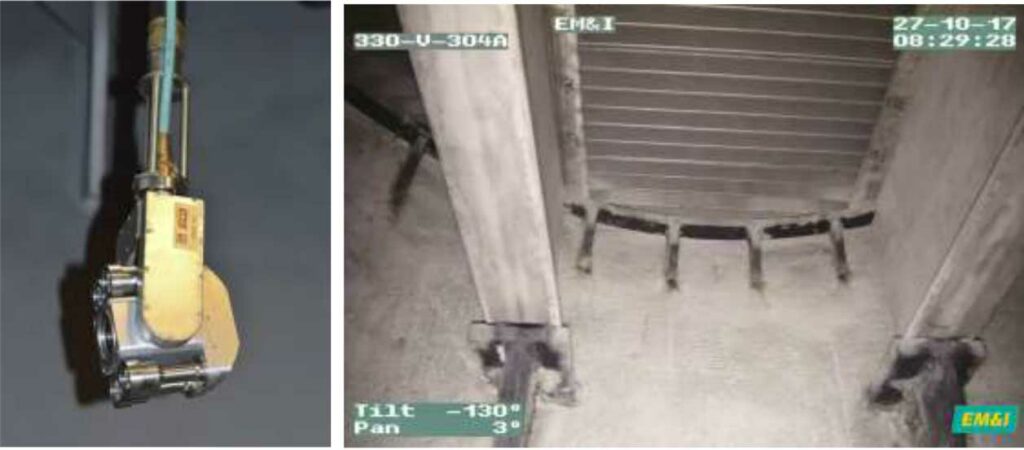
In Summary…..New inspection and data management technologies have created a revolution in how we assure the integrity of gas storage and transportation in a safer and more cost-efficient way.
The offshore LNG industry has so far been at the forefront of this development, and this will likely continue as these new processes and technologies become well established and open the doors for even newer energy sources, hydrogen, for example.